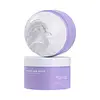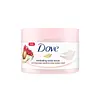What's inside
What's inside
 Key Ingredients
Key Ingredients

 Benefits
Benefits

 Concerns
Concerns

 Ingredients Side-by-side
Ingredients Side-by-side

Water
Skin ConditioningGlycerin
HumectantDextrin
AbsorbentGlyceryl Stearate
EmollientKaolin
AbrasiveCaprylic/Capric Triglyceride
MaskingNiacinamide
SmoothingPropanediol
SolventDisteardimonium Hectorite
StabilisingPEG-100 Stearate
Parfum
MaskingPhenoxyethanol
PreservativeTriethanolamine
BufferingCellulose
AbsorbentMethylparaben
PreservativeEthylhexylglycerin
Skin ConditioningTriethoxycaprylylsilane
Alumina
AbrasiveGlycolic Acid
BufferingAscorbic Acid
AntioxidantGlutathione
CI 77891
Cosmetic ColorantCI 73360
Cosmetic ColorantCI 77007
Cosmetic ColorantWater, Glycerin, Dextrin, Glyceryl Stearate, Kaolin, Caprylic/Capric Triglyceride, Niacinamide, Propanediol, Disteardimonium Hectorite, PEG-100 Stearate, Parfum, Phenoxyethanol, Triethanolamine, Cellulose, Methylparaben, Ethylhexylglycerin, Triethoxycaprylylsilane, Alumina, Glycolic Acid, Ascorbic Acid, Glutathione, CI 77891, CI 73360, CI 77007
Water
Skin ConditioningGlycerin
HumectantHydrated Silica
AbrasiveSodium Lauroyl Isethionate
CleansingStearic Acid
CleansingSodium Stearate
CleansingCocamidopropyl Betaine
CleansingParfum
MaskingSodium Palmitate
CleansingCetearyl Alcohol
EmollientLauric Acid
CleansingSodium Isethionate
CleansingJojoba Esters
EmollientPhenoxyethanol
PreservativeHydroxyacetophenone
AntioxidantSodium Chloride
MaskingSodium Palm Kernelate
CleansingTetrasodium EDTA
Sodium Benzoate
MaskingZinc Oxide
Cosmetic ColorantPunica Granatum Seed Powder
AbrasiveButyrospermum Parkii Butter
Skin ConditioningSodium Hydroxide
BufferingBenzyl Salicylate
PerfumingHexyl Cinnamal
PerfumingLinalool
PerfumingCI 77491
Cosmetic ColorantCI 77891
Cosmetic ColorantCI 17200
Cosmetic ColorantWater, Glycerin, Hydrated Silica, Sodium Lauroyl Isethionate, Stearic Acid, Sodium Stearate, Cocamidopropyl Betaine, Parfum, Sodium Palmitate, Cetearyl Alcohol, Lauric Acid, Sodium Isethionate, Jojoba Esters, Phenoxyethanol, Hydroxyacetophenone, Sodium Chloride, Sodium Palm Kernelate, Tetrasodium EDTA, Sodium Benzoate, Zinc Oxide, Punica Granatum Seed Powder, Butyrospermum Parkii Butter, Sodium Hydroxide, Benzyl Salicylate, Hexyl Cinnamal, Linalool, CI 77491, CI 77891, CI 17200
 Reviews
Reviews

Ingredients Explained
These ingredients are found in both products.
Ingredients higher up in an ingredient list are typically present in a larger amount.
Ci 77891 is a white pigment from Titanium dioxide. It is naturally found in minerals such as rutile and ilmenite.
It's main function is to add a white color to cosmetics. It can also be mixed with other colors to create different shades.
Ci 77891 is commonly found in sunscreens due to its ability to block UV rays.
Learn more about CI 77891Glycerin is already naturally found in your skin. It helps moisturize and protect your skin.
A study from 2016 found glycerin to be more effective as a humectant than AHAs and hyaluronic acid.
As a humectant, it helps the skin stay hydrated by pulling moisture to your skin. The low molecular weight of glycerin allows it to pull moisture into the deeper layers of your skin.
Hydrated skin improves your skin barrier; Your skin barrier helps protect against irritants and bacteria.
Glycerin has also been found to have antimicrobial and antiviral properties. Due to these properties, glycerin is often used in wound and burn treatments.
In cosmetics, glycerin is usually derived from plants such as soybean or palm. However, it can also be sourced from animals, such as tallow or animal fat.
This ingredient is organic, colorless, odorless, and non-toxic.
Glycerin is the name for this ingredient in American English. British English uses Glycerol/Glycerine.
Learn more about GlycerinParfum is a catch-all term for an ingredient or more that is used to give a scent to products.
Also called "fragrance", this ingredient can be a blend of hundreds of chemicals or plant oils. This means every product with "fragrance" or "parfum" in the ingredients list is a different mixture.
For instance, Habanolide is a proprietary trade name for a specific aroma chemical. When used as a fragrance ingredient in cosmetics, most aroma chemicals fall under the broad labeling category of “FRAGRANCE” or “PARFUM” according to EU and US regulations.
The term 'parfum' or 'fragrance' is not regulated in many countries. In many cases, it is up to the brand to define this term.
For instance, many brands choose to label themselves as "fragrance-free" because they are not using synthetic fragrances. However, their products may still contain ingredients such as essential oils that are considered a fragrance by INCI standards.
One example is Calendula flower extract. Calendula is an essential oil that still imparts a scent or 'fragrance'.
Depending on the blend, the ingredients in the mixture can cause allergies and sensitivities on the skin. Some ingredients that are known EU allergens include linalool and citronellol.
Parfum can also be used to mask or cover an unpleasant scent.
The bottom line is: not all fragrances/parfum/ingredients are created equally. If you are worried about fragrances, we recommend taking a closer look at an ingredient. And of course, we always recommend speaking with a professional.
Learn more about ParfumPhenoxyethanol is a preservative that has germicide, antimicrobial, and aromatic properties. Studies show that phenoxyethanol can prevent microbial growth. By itself, it has a scent that is similar to that of a rose.
It's often used in formulations along with Caprylyl Glycol to preserve the shelf life of products.
Water. It's the most common cosmetic ingredient of all. You'll usually see it at the top of ingredient lists, meaning that it makes up the largest part of the product.
So why is it so popular? Water most often acts as a solvent - this means that it helps dissolve other ingredients into the formulation.
You'll also recognize water as that liquid we all need to stay alive. If you see this, drink a glass of water. Stay hydrated!
Learn more about Water